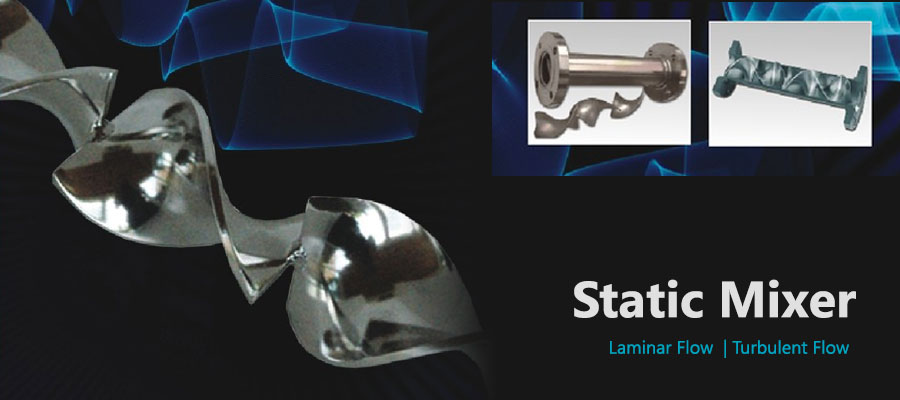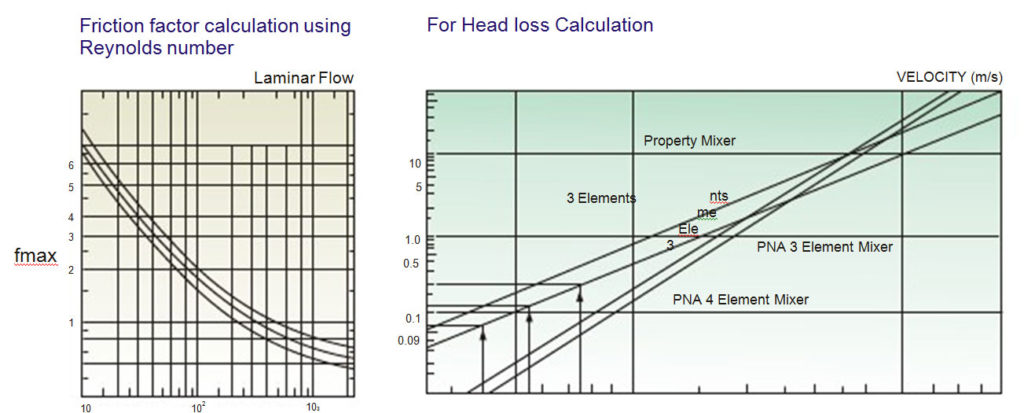Static Mixer
Working
Laminar Flow
In case of two miscible liquids in laminar flow, the main mechanism in a static mixer is flow division. The elements are helical are arranged in a series of alternating left and right hand 180 twists.
Turbulent Flow
In case of two miscible liquids in a turbulent flow, the main mechanism is radial mixing fluids are constantly moved from the pipe centre to the pipe walls and the fluid change direction with each succeeding element. In case of two immiscible liquids in a turbulent flow, the radial mixing mechanism reduces radial differences in velocity and in droplet sizes.



: SS – 316Material
Viscosity range : less than 1500 cps
Reynolds no. : greater than 500
: ½ “ to 14”Size range
Application : Mixing products into water or water like fluids.
SW-SMx-01 : using for low viscosity. The faster the fluid moves, the faster mixing. Great for mixing products into water or water like fluids.
SW-SMx-02 : using for high viscosity blending application and when
fluid moves more slowly through the mixer
Material: SS – 316
Viscosity range : greater than 1500 cps
Reynolds no. : less than 500
: ½ “ to 14”Size range
Application : Epoxy blending, Fruits into yogurt, Cookies into ice cream, Thermal homogeneity, slurry suspension, Folding/stripping .
Excellent mixing and dispersing even with widely differing fluid
viscosities
Compact designs
Reduced product degradation due to very short residence time
Mixing of sensitive products under minimal shear stress
No deposits and blockages due to excellent cross-mixing
Static mixers deliver a high level of mixing efficiency, formation of byproducts can be dramatically reduced.
Low energy consumption
Installation is very easy
Static Mixers are available in all standard pipe sizes and in the case of open channel designs, are available in any size with no upper limit.
Pulp and Paper Processing
Pharmaceuticals
Oil Refining
Petrochemicals
Food Processing
Natural Gas Processing
Water and Waste Water Treatment
For calculating element following criteria used :
Reynolds no.= Dvñ/µ
Re<10 = 24-36 element
10<Re<100 = 18 element
100<Re<1000 = 12 element
1000<Re<10000 = 6 element
Re>10000 = 4 element
?P =3.061×10 6 f nsmxpx(u)2 xE
G value calculation
G = v(hf gñ/ìt)
Pipe diameter
(D)in meter = v(4Q/pv)


